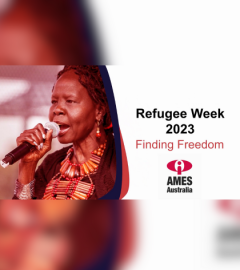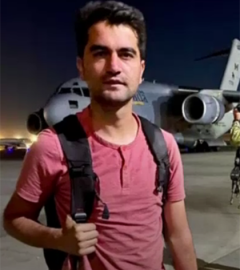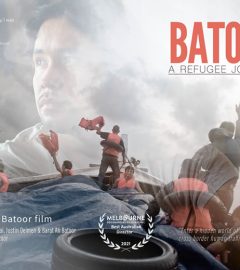Refugee law failing people fleeing failed states
Current legal arrangements around refugees are failing hundreds of thousands of people seeking safety and dignity, a leading global migration expert argues,
Legal definitions derived from the 1951 Refugee Convention do not take into account that today many people flee the collapse of states and not specific persecutors, says Dr Guita Hourani.
Writing a paper for the think tank The Lowy Institute, Dr Hourani says asylum systems worldwide are built on a mid-20th-century understanding of flight: individuals escaping repressive governments or militias, targeted for who they are or what they believe.
“But across the globe today, millions flee not from a single persecutor, but from the slow implosion of entire states,” she writes.
“Protection collapses when courts stop functioning, law enforcement is either incapacitated, politicised, or complicit, when government corruption and financial schemes bring countries to their knees, or when an armed non-state actor becomes part of the ruling power.
“Despite decades of reform, the international refugee system remains structurally unprepared for this reality,” Dr Hourani says.
She says legal definitions of asylum remain largely tethered to the 1951 convention, which centres on targeted persecution.
This leaves “little space for those escaping systemic collapse, even when no state or group can protect them. The result is a growing mismatch between legal categories and real-world displacement”. 
“We have seen this in countries as varied as Syria, Sudan, Myanmar, Venezuela, and Sri Lanka – where people flee not only persecution, but the collapse of state protection itself,” Dr Hourani says.
She argues their displacement stems less from identity-based targeting than from the failure of institutions to guarantee even basic safety and rights.
“Their suffering is no less real, though their claims may be harder to articulate within the current legal language of refugee law,” she says.
Dr Hourani cites Lebanon as a compelling case study.
Since 2019, Lebanon has faced one of the worst economic collapses in its history with a currency in free fall, frozen bank deposits and public institutions ceasing to function.
The 2020 Beirut Port explosion deepened the problems and caused paralysis in government.
“Despite these conditions, immigration tribunals – particularly in North America – often assess Lebanese asylum claims within constrained legal frameworks that may not fully reflect on-the-ground realities,” Dr Hourani says.
As a country-of-origin expert who has submitted reports in hundreds of such cases, she has seen how legal reasoning can overlook the scale of collapse.
“In one US case, a woman fled militia threats after joining anti-corruption protests. Police took no action. The judge ruled the threats were personal, not political, without engaging the broader context of an armed non-state actor’s governance role and the state’s inability to respond,” Dr Hourani says.
“Another man, persecuted for anti-militia views, was told he could relocate within Lebanon – a country smaller than the US state of Connecticut – where sectarian, political, and familial networks eliminate any true elsewhere,” she says.
Dr Hourani says these issues are occurring across a growing number of country contexts.
Many asylum seekers from Syria, Somalia, and Sudan may not meet the prescribed criteria of persecution by a state or militia, yet they flee from environments where the absence of protection is just as dangerous, she says.
“Courts in the United States, Canada, Germany, and the United Kingdom have at times rejected claims from these contexts, reflecting the difficulty of accommodating systemic collapse within existing legal definitions of persecution,” Dr Hourani says.
“Part of the problem lies in the legal tools used to assess claims. When systemic collapse is framed as merely an “economic” or “governance” crisis, it obscures the state’s inability to protect. And when legal reasoning demands an “identifiable persecutor”, it overlooks more diffuse, yet devastating, threats.
“This gap in legal reasoning reflects a global failure to adapt protection frameworks to the realities of modern forced displacement.
“Structural collapse generates a condition of rightlessness: where protection is absent, accountability is elusive, and citizens fall through the cracks of their own legal systems.
“Refugee law, as currently interpreted in many jurisdictions, often struggles to fully address these situations.
“Even when people are not directly targeted for their identity, they may still be unable to survive or find protection in their home country. This is especially true for those vulnerable to militia control, sexual violence, or targeted economic coercion – threats often overlooked unless they fit established legal categories,” Dr Hourani says.
She says what is needed is a multi-tiered shift in approach that better accounts for state collapse and institutional failure.
“A revised framework should ask whether a state can guarantee rights and protection – not merely whether an individual can identify a specific persecutor. Such a shift would enable courts and governments to more accurately respond to modern causes of asylum seeking,” she says.
Read the full paper: The protection paradox: How refugee law fails those fleeing failed states | Lowy Institute












